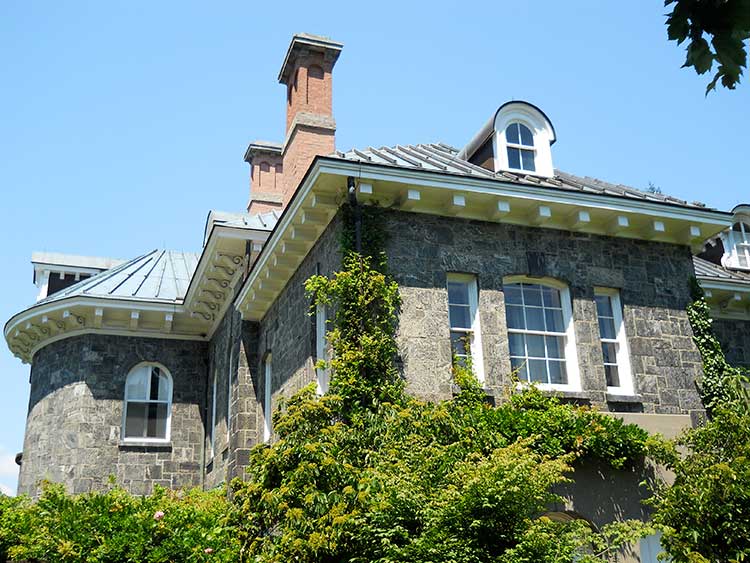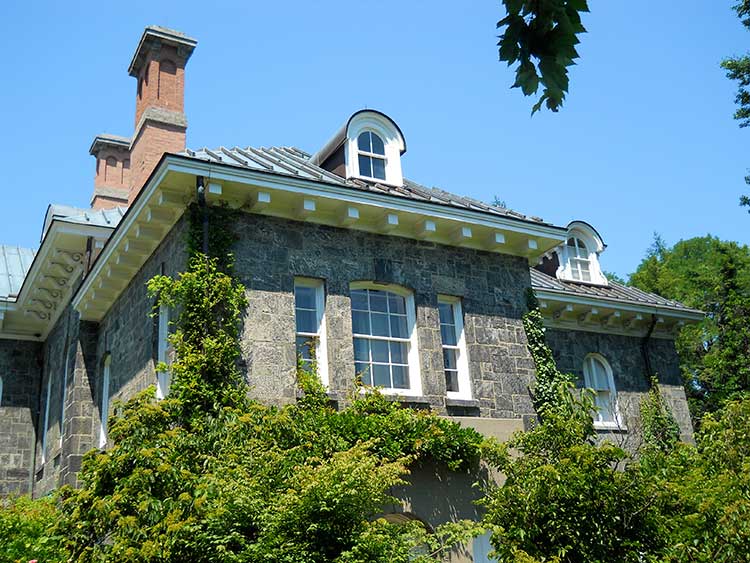Stonehurst

5225 Sycamore Avenue between West 252nd and West 254th streets
Architect Unknown
1860-1861
In the 1850s, several wealthy New York City merchants and industrialists were persuaded to purchase estates on the mainland north of Manhattan along a high ridge overlooking the Hudson River and to erect their mansions there. The area became known as the Riverdale section of The Bronx. Access to Manhattan was afforded by the recently completed New York and Hudson River Railway that ran at the base of the ridge along the riverside. By the following decade, the original indifferent service on the line had improved and a station called Riverdale-on- Hudson opened at today’s West 254th Street. This was enough to entice Robert Colgate to purchase a farm nearby and to build his own mansion.
Robert Colgate, the eldest son of pioneer soap manufacturer William Colgate, made his own fortune by owning the largest paint and linseed oil distributor in the country. He was also a philanthropist, supporting cultural, medical and religious institutions.
The design of Colgate’s mansion, called Stonehurst, has the air of an Italianate villa popular in the middle of the nineteenth century. However, the structure also has a classical flavor with a symmetrical massing, unusual for the time. The whole makes the edifice very picturesque. The site also provides dramatic views of the wide Hudson River and of the New Jersey Palisades beyond.

The two-story mansion is made of gray Maine granite cut in random ashlar. It has a low-pitched dormered roof with broad eaves surrounding a flat deck. While each façade is symmetrical, each is different from the others. The northern façade holds the entryway. At the head of a short flight of steps is the central entrance flanked by porches. Two paneled doors in an arched doorway lead into the house. Above, at the second floor beneath the low-pitched gable, is a bull’s eye window with four keystones arranged in a cruciform. The west side, facing the river, and the south side, facing a broad lawn, both have semicircular projections from the center of the façade accessed through French doors. The west side projection leads to a sweeping encircling porch. Both fronts have round arched windows. The east façade faces Sycamore Avenue and a hill with no really picturesque views. Thus, this facing is plain.
Several other families owned Stonehurst after Robert Colgate died in 1885. Among them was George W. Perkins, who later acquired Wave Hill, the neighboring property to the south. He was a banking partner at J.P. Morgan. He served as chairman of the Palisades Interstate Park Commission and as the campaign manager of Theodore Roosevelt in his 1912 “Bull Moose” third party presidential run. A later owner was Nicholas DeB. Katzenbach. He was the federal representative who confronted Governor George Wallace when he stood in the schoolhouse door to try to prevent the integration of the University of Alabama. Afterward, Katzenbach served as United States Attorney General under President Lyndon Johnson.
Lloyd Ultan



